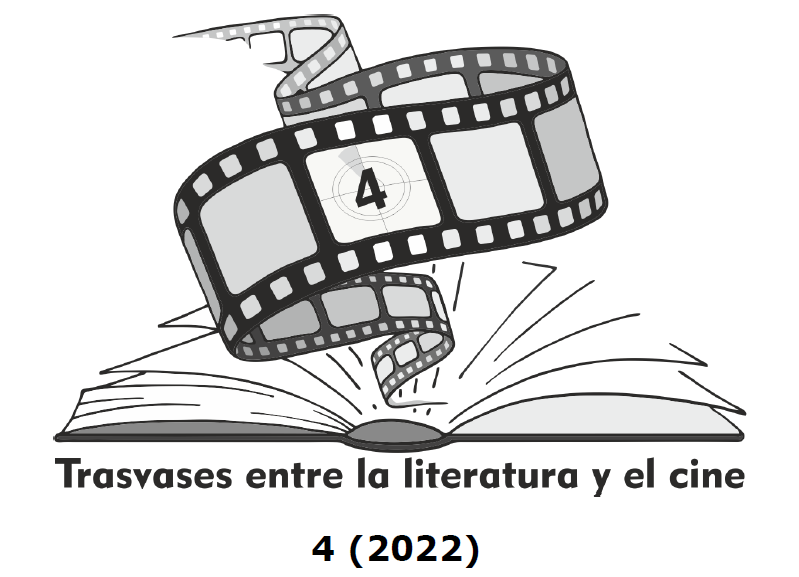Nuestra Señora de París, de Victor Hugo: su influencia sobre la percepción del teatro medieval en el cine
DOI:
https://doi.org/10.24310/Trasvasestlc.vi4.13441Keywords:
Theatre in Cinema, Mediaeval Theater, Scenographies, Victor Hugo, Modern ImaginariesAbstract
Four film adaptations of Victor Hugo's Notre Dame de Paris (1831) are analysed as iconographies of the imaginary of medieval theatre in contemporary times. Although each of the versions has unique motifs (such as the transfer of the festival to the night, the scenographic “mettre en abyme”, the guignolesque plasticity, and the cartoons), the theatrical topic is established by the entablature in the centre of the square and the transfer of the figures of medieval “moralité”, as conceived by Hugo, to the streets. In the background, a reading in the key of political rebellion of the theatrical phenomenon is proposed and not only on the religious and aristocratic society denounced in the novel.
Downloads
Metrics
Publication Facts
Reviewer profiles N/A
Author statements
Indexed in
-
—
- Academic society
- N/A
- Publisher
- Universidad de Málaga
References
Alonso Menéndez, Jorge, Alonso, Juan José, & Mastache, Enrique A. (2007), La Edad Media en el cine, Madrid, T&B.
Attolini, Vito (1993), Immagini del Medioevo nel Cinema, Bari, Dedalo.
Bajtin, Mijail (2003), La cultura popular en la Edad Media y el Renacimiento, Madrid, Alianza.
Barrio Barrio, Juan Antonio (2005), «La Edad Media en el cine del siglo XX», Medievalismo. Boletín de la Sociedad Española de Estudios Medievales, 15, págs. 241-268.
Bergman, Ingmar (1961), «Wood Painting. A Morality Play», The Tulane Drama Review, 6, págs. 140-152.
Body, Jacques (2002), «Pour Alcmène», Revue de Litterature Comparée, 301, págs. 27-32.
Buezo Canalejo, Catalina (1993), La mojiganga dramática: de la fiesta al teatro, Kassel, Reichenberger.
Cazanave, Caroline (2010), «Le bénéfique tiraillement du medieval et du moyenâgeux dans le Notre Dame de Paris de Victor Hugo et ses prolongements modernes», en Élodie Burne-Errecade & Valérie Naudet (edd.), Fantasmagories du Moyen Âge, Aix-en-Provence, Presses Universitaires de Provence, págs. 107-117.
Conton, Blandine (2014), «Notre Dame de Paris: Reverberations in English and American Operas», Proceedings of the 55th International Scientific Conference of
Daugavpils University, Daugavpils (Latvia), Daugavpils Universitate, págs. 825-830.
Craven, Allison (2012), «Esmeralda of Notre Dame: The Gypsy in Medieval View from Hugo to Disney», en Tison Pugh & Susan Aronstein (edd.), The Disney Middle Ages: A Fairy-Tale and Fantasy Past, New York, Palgrave MacMillan, págs. 225-242.
Ferrone, Siro (1997), «La Commedia dell’Arte», Quaderns d’Italià, 2, págs. 9-20.
Gli?ska, Klementyna (2011), «Les Comédies latines à la culture du savoir au XIIe siècle: Les stragégies rhétoriques au Geta du Vital de Blois», European Medieval Drama, 15, págs. 1-29.
Hiddleston, James A. (2002), Victor Hugo: Romancier de l´abime, Oxford, Legenda.
Huerta Calvo, Javier (1984), El teatro medieval y renacentista, Madrid, Playor.
Massip Bonet, Francesc (1992), El teatro medieval: Voz de la divinidad, cuerpo de histrión, Barcelona, Montesinos.
Narbona Vizcaíno, Rafael (2017), La ciudad y la fiesta: Cultura de la representación en la sociedad medieval (siglos XIII-XV), Madrid, Síntesis.
Onofrei, Paula Andrea (2018), «Medieval Elements in Victor Hugo´s The Hunchback of Notre Dame», Anastasis. Research in Medieval Culture and Art, 2, págs. 152-156.
Perinelli, Roberto (2011), Apuntes sobre la Historia del Teatro Occidental (I), Buenos Aires, Inteatro.
Prévost, Maxime, & Hamel, Yan (edd.) (2003), Victor Hugo 2003-1802. Images et Transfigurations, Montréal, Fides.
Sardón Navarro, Isabel M. Sonia (1996), «Formas del carnaval en el teatro. Del realismo grotesco de Aristófanes a los criados de la comedia de Menandro», Castilla. Estudios de Literatura, 21, págs. 193-209.
Symes, Carol (2017), «Knowledge and Transmission: Media and Memory», en Jody Enders (ed.), A Cultural History of Theatre. A Cultural History of Theatre in the Middle Ages, London/New York, Bloomsbury, págs. 199-211.
Tapie, Marie (2000), «Les adaptations cinematographiques de Notre Dame de Paris», en Groupe Hugo (Equipe de recherche "Littérature et civilisation du XIX° siècle"), Communication au Groupe Hugo: http://groupugo.div.jussieu.fr/groupugo/doc/00-12-16Tapie.pdf [Fecha de consulta: 15/06/2021].
Ue, Tom (2018), «The Sense of an ending in The Hunchback of Notre Dame: A Converstion with Sarah Langford and Nicholas Cunha», Journal of Adaptation in Film and Performance, 11, págs. 327-336.
Williams, David (1990), «Medieval Movies», The Yearbook of English Studies, 20, págs. 1-32.
Downloads
Published
How to Cite
Issue
Section
License
All authors published in this journal accept the following copyright terms:
a. Authors retain their authors´ rights (copyright) and grant First Publication Rights to the journal, which whill be published under a the Creative Commons Attribution-NonCommercial-ShareAlike 4.0 International (CC BY-NC-SA 4.0) license. All about this license is available in the following link: <http://creativecommons.org/licenses/by-nc-sa/4.0>
b. Authors may separately establish additional agreements for the non-exclusive distribution of the version of the work published in the journal (e.g. including it in an institutional repository, or publishing it in a book) with an acknowledgement of its initial publication in this journal.
c. Authors are allowed and encouraged to disseminate their work electronically (e.g. in institutional repositories or on their own website) as this can lead to productive exchanges, as well as earlier and more extensive citation of published work.
The author is responsible for obtaining permission from the copyright holder when using copyrighted materials.
This electronic journal is published by University of Málaga (UmaEditorial), thus it is necessary to cite the origin of any partial or total reproduction.








22.png)










